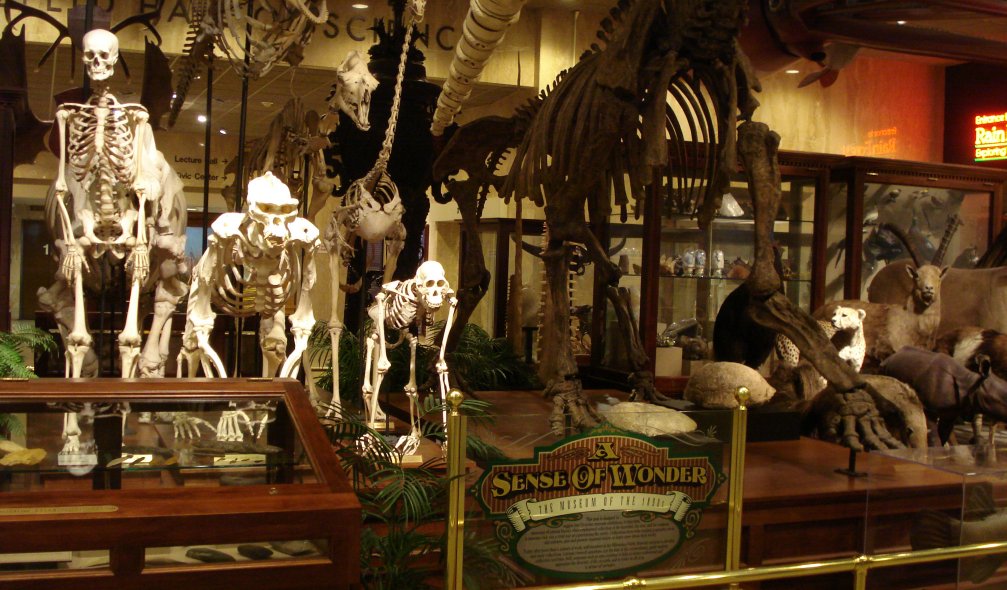A delegation from State and the Smithsonian were in Brazil to look at the Casa Thomas Jefferson as a “Model American Space” While in town, they also visited other important cultural spaces like Museu da Republica, Centro Cultural Banco do Brasil and SESC Ceilândia among others and Myles Gordon, the Smithsonian consultant gave a talk about how museums were changing.

Museums used to be about collecting & preserving stuff. They were like temples of knowledge, where experts spoke to each other and decided what should be shown to the larger public. They still collect and preserve stuff, but now they are much more outward oriented. They have moved from preservation to study, from defined to interactive, and in many ways from emphasis on tangible things to a more intangible experience.
You can see an example of the old version in my picture above. You can almost smell the formaldehyde. Of course, not all museums are like this and not all parts of museums are equally affected. Parts of the old model remain very useful. You still need stuff and you still need to protect it.
There has also been a change in how museums are managed and funded. In the classic model, museums were financed by some kind of patron. It usually was some sort of institution like a government or a university, but it could be a private person or organization. The key was that the patron paid. Today’s museums get their funding from a wider variety of sources. Many still have a patron that pays a lot of the bills, but they supplement with things like memberships, diverse donations, shops, merchandise etc. They are much more entrepreneurial than they used to be. This goes with the changes mentioned above, but the trends are part tied to the same changes in society; one does not cause the other.
The Smithsonian has had a mixed system from the beginning. It is the only museum (actually museum complex) run by the Federal government, but it began with private money. James Smithson, a British subject, left his fortune “to the United States of America, to found at Washington, under the name of the Smithsonian Institution, an establishment for the increase and diffusion of knowledge ….” Smithson was an amateur scientist. He has never been to the United States. We are not exactly sure what Smithson had in mind. Some people think he intended a university. Congress argued about what to do with the money but finally decided to create the kind of museum cum research and knowledge disseminating organization we have today. It has been a good model.
Today the Smithsonian consists of nineteen museums, nine research centers, twenty libraries and the National Zoo. It is affiliated with 170 institutions in a national network. Most of the buildings are along or near the Capitol Mall in Washington. About 65% of the funding comes from the Federal government, with private sources, NGOs etc. coming up with the rest. The Chief Justice of the Supreme Court is the Chairman of the Smithsonian board; the Vice President is the Vice Chairman. They have 6000 employees and an equal number of volunteers. The museums are free and each year they get 30 million in person visits and 188 million unique visitors on their websites. Only 2% of the collection is on display at any time, which is one reason they are digitizing the collections, so that scholars and ordinary viewers can use and enjoy more than can be put in display cases.
I have been enjoying Smithsonian for nearly thirty years. Because it is free and accessible, you can wander in and out w/o feeling that you have to spend the whole day and see everything there is to see in each of the venues. The only problem since 2001 has been that there are security lines and not all the doors are open. I used to just cut through some of the buildings and look at whatever I came across. That is no longer possible. It is still nice to wander around. The Mall is nice in general. They hold lots of events there and you get Smithsonian Folk Life Festivals every summer.
I wrote a few posts about similar topics. Milwaukee Museum, Smithsonian goes south & Science changes.
